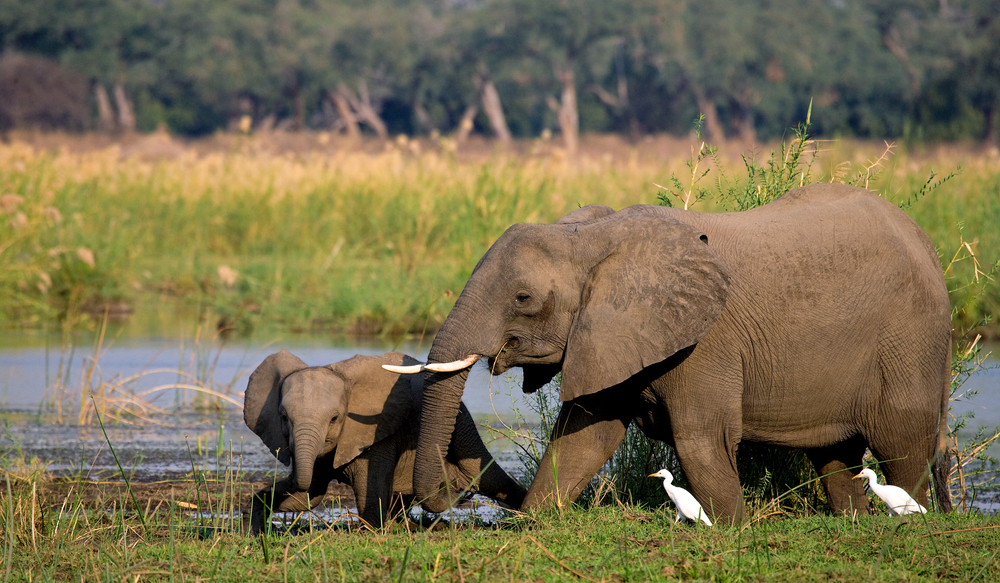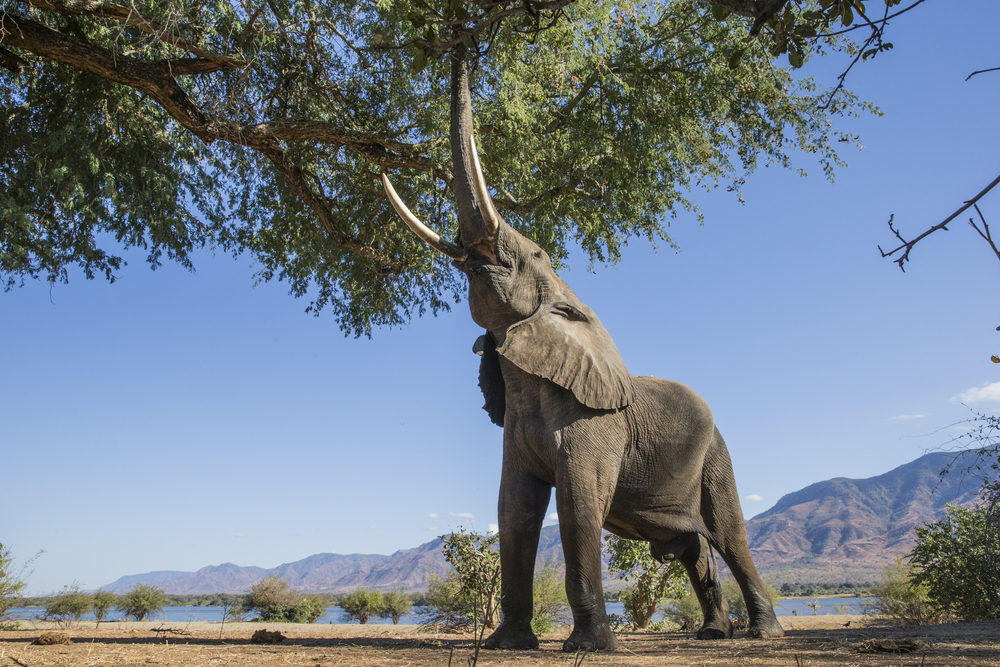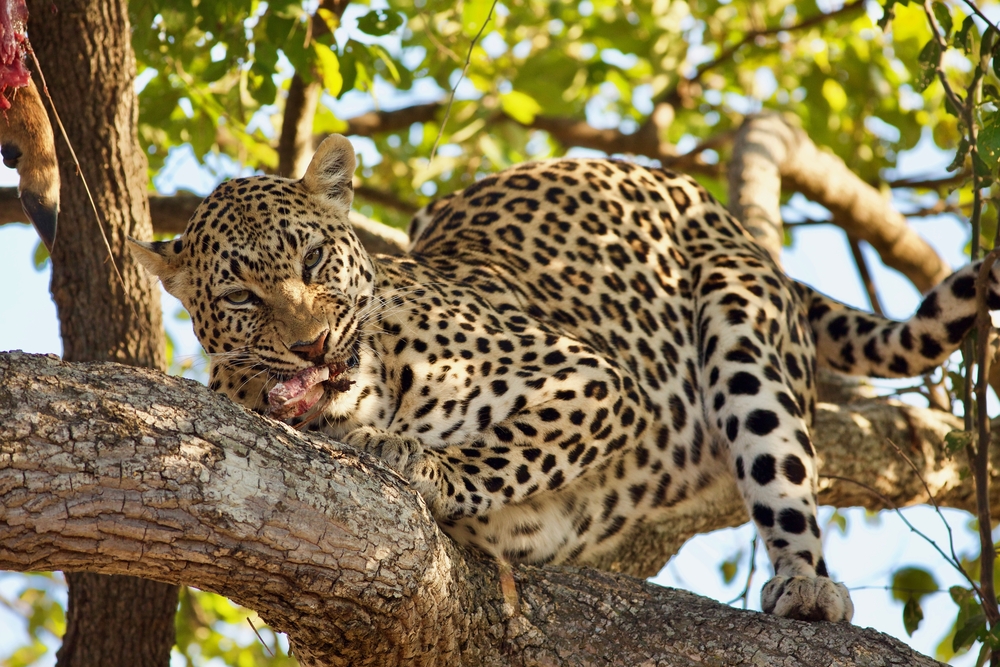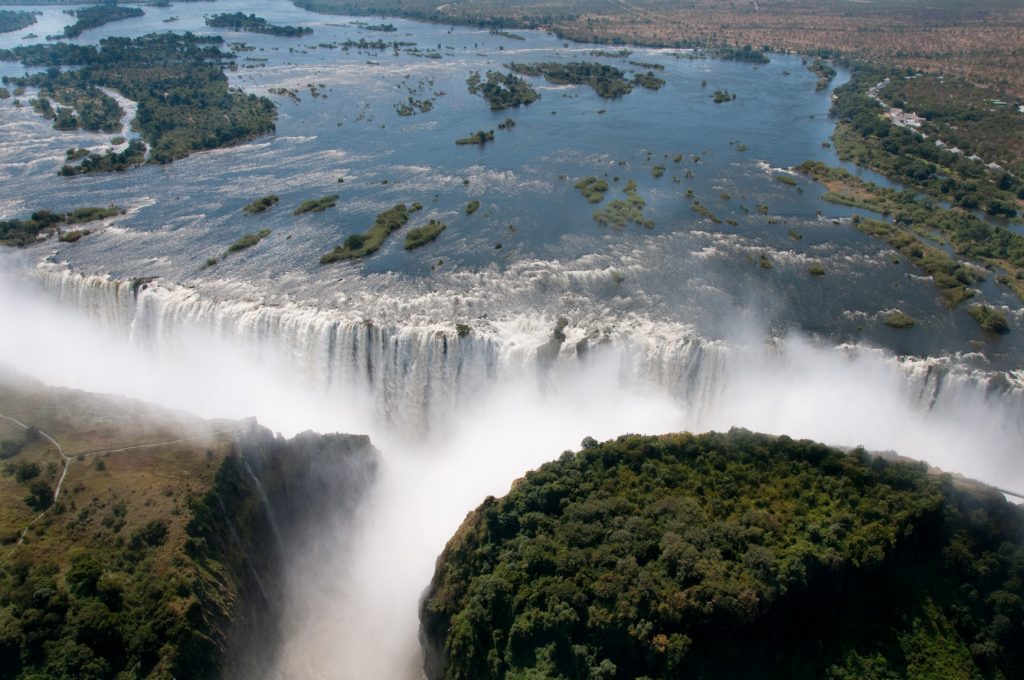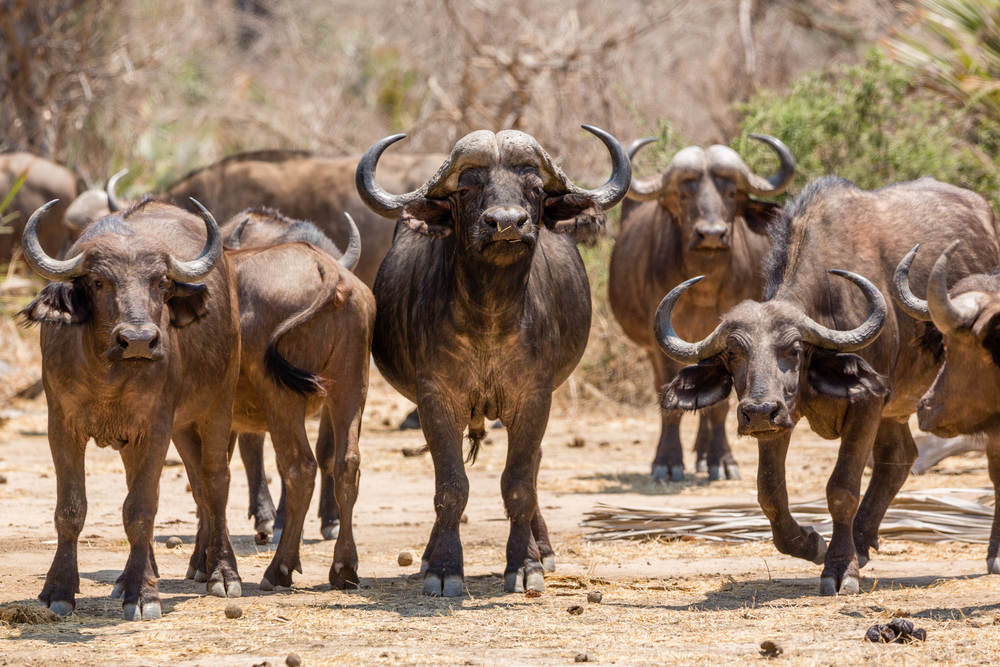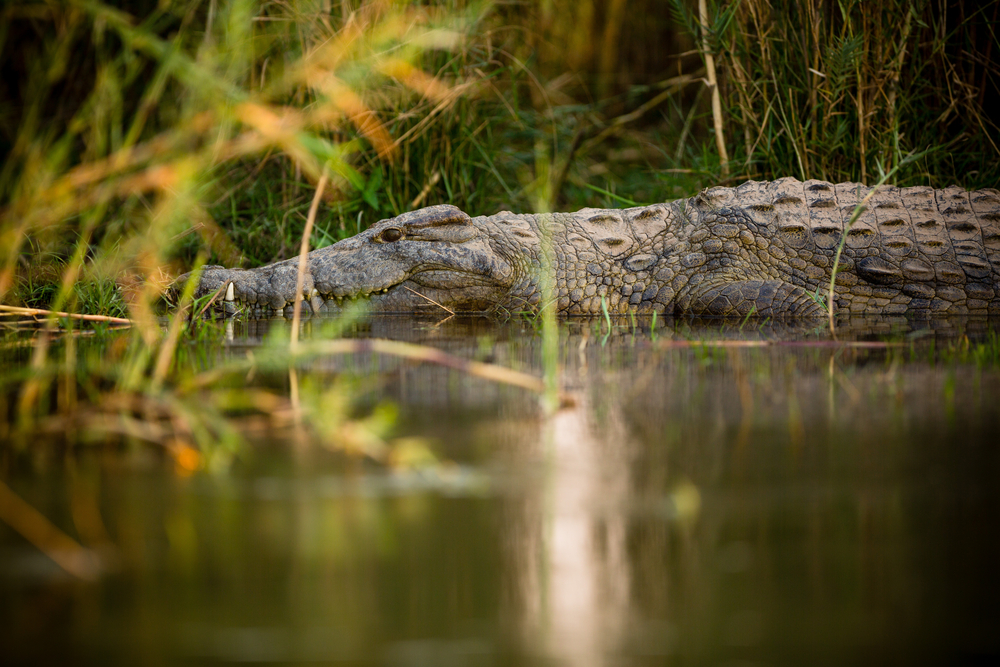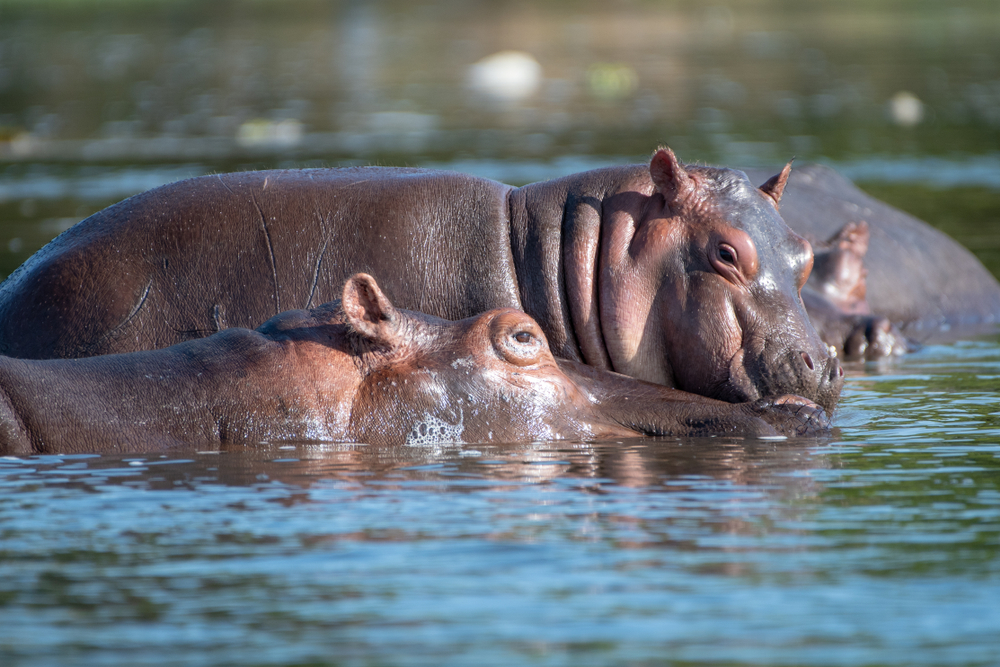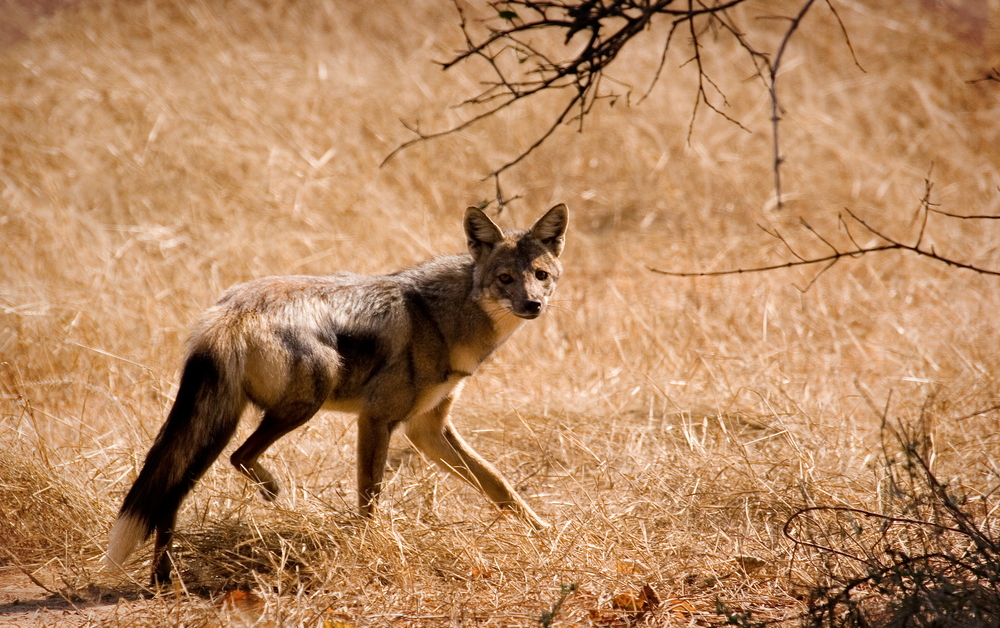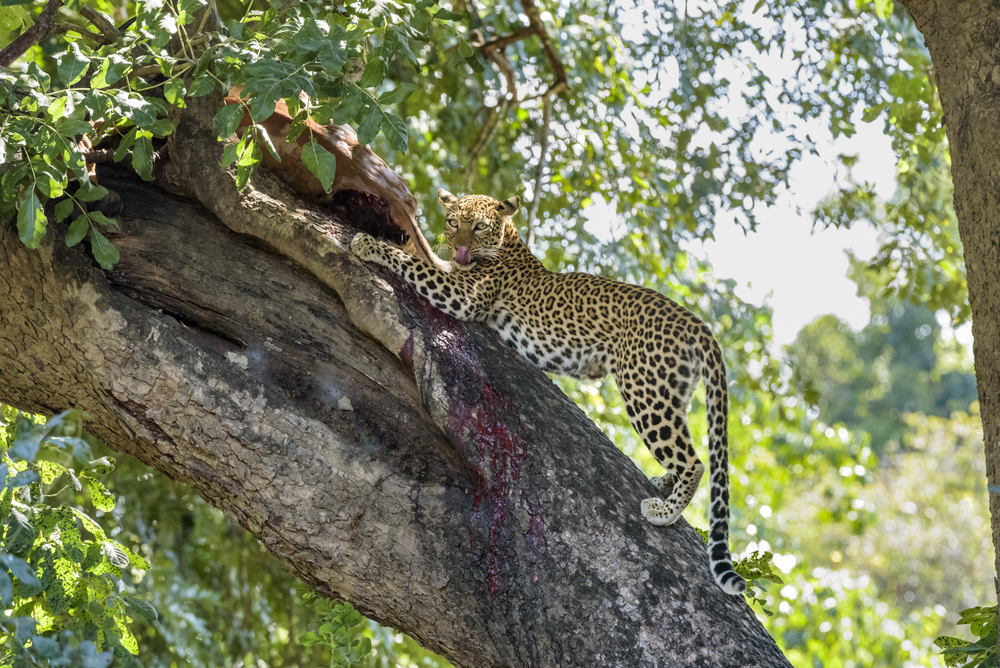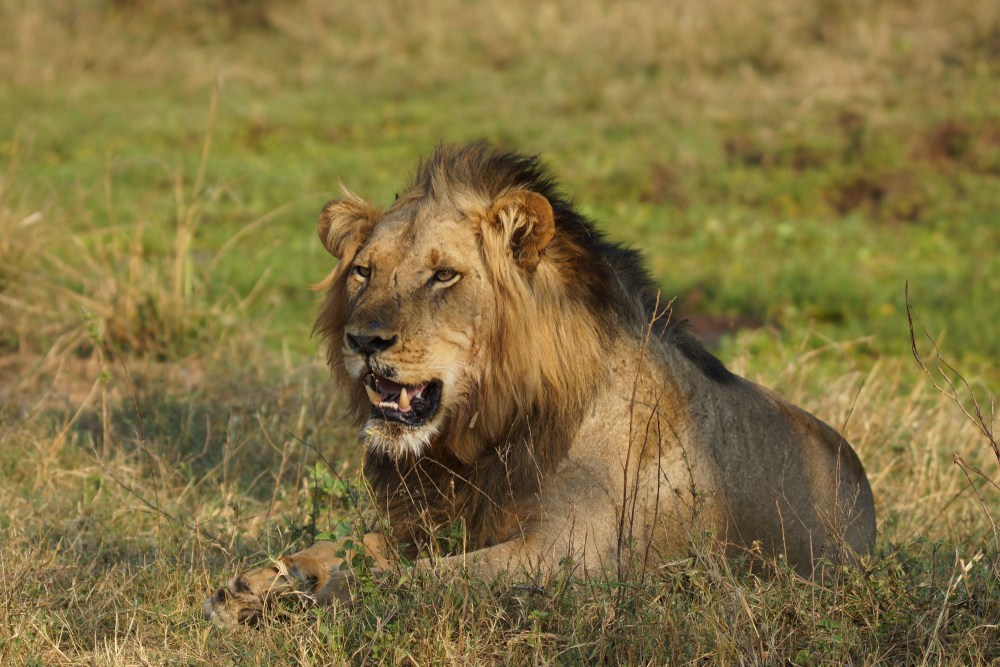Birds
Lower Zambezi National Park is a paradise for bird enthusiasts, boasting a diverse avian population that thrives in its varied habitats, from riverbanks to woodlands.
African Fish Eagle: A majestic symbol of Africa, the African fish eagle is often spotted perched near water bodies, scanning for fish with its keen eyesight before swooping down to catch its prey.
Southern Carmine Bee-eater: With its vibrant plumage of crimson and turquoise, the Southern carmine bee-eater is a striking sight as it swoops and dives to catch insects, often found nesting in riverbanks.
Yellow-billed Stork: These elegant wading birds can be seen stalking the shallows of rivers and wetlands, using their long, slender bills to probe for fish, frogs, and other aquatic prey.
Malachite Kingfisher: Named for its brilliant green and blue plumage, the Malachite kingfisher is a small but dazzling bird often seen darting over water, hunting for fish and aquatic insects.
Lilac-breasted Roller: With its vibrant hues of lilac, blue, and green, the lilac-breasted roller is a common sight in savannas and woodlands, where it perches on branches and hunts for insects.
African Jacana: These unique birds are known for their long toes, which allow them to walk on floating vegetation as they forage for insects, small fish, and other aquatic prey.
White-fronted Bee-eater: Often found in large colonies nesting in sandy riverbanks, white-fronted bee-eaters are skilled aerial hunters, catching insects on the wing with remarkable agility.
Pied Kingfisher: With its distinctive black and white plumage and large head, the pied kingfisher is a familiar sight hovering over water bodies before plunging in to catch fish.
African Skimmer: Recognizable by its striking black and white plumage and unique feeding behavior, the African skimmer glides low over water, skimming the surface with its lower mandible to catch fish.
Carmine Bee-eater: These brightly colored birds are a spectacle to behold, gathering in large flocks during the breeding season to excavate nesting burrows in riverbanks and feed on flying insects.








































































